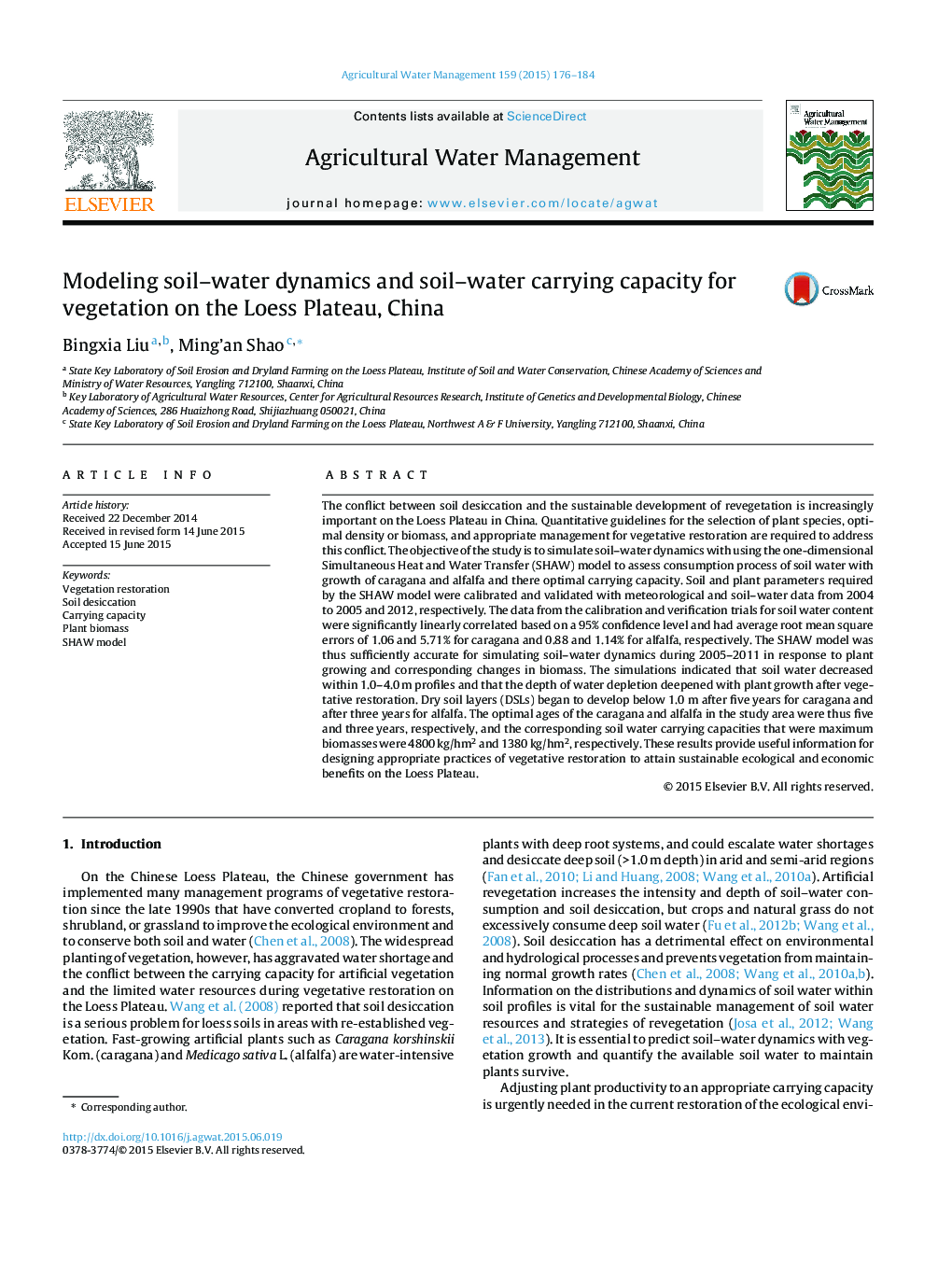| کد مقاله | کد نشریه | سال انتشار | مقاله انگلیسی | نسخه تمام متن |
|---|---|---|---|---|
| 6363715 | 1622920 | 2015 | 9 صفحه PDF | دانلود رایگان |
عنوان انگلیسی مقاله ISI
Modeling soil-water dynamics and soil-water carrying capacity for vegetation on the Loess Plateau, China
ترجمه فارسی عنوان
مدل سازی دینامیک خاک-آب و ظرفیت بارندگی خاک-خاک برای پوشش گیاهی در ورقه لس، چین
دانلود مقاله + سفارش ترجمه
دانلود مقاله ISI انگلیسی
رایگان برای ایرانیان
کلمات کلیدی
موضوعات مرتبط
علوم زیستی و بیوفناوری
علوم کشاورزی و بیولوژیک
علوم زراعت و اصلاح نباتات
چکیده انگلیسی
The conflict between soil desiccation and the sustainable development of revegetation is increasingly important on the Loess Plateau in China. Quantitative guidelines for the selection of plant species, optimal density or biomass, and appropriate management for vegetative restoration are required to address this conflict. The objective of the study is to simulate soil-water dynamics with using the one-dimensional Simultaneous Heat and Water Transfer (SHAW) model to assess consumption process of soil water with growth of caragana and alfalfa and there optimal carrying capacity. Soil and plant parameters required by the SHAW model were calibrated and validated with meteorological and soil-water data from 2004 to 2005 and 2012, respectively. The data from the calibration and verification trials for soil water content were significantly linearly correlated based on a 95% confidence level and had average root mean square errors of 1.06 and 5.71% for caragana and 0.88 and 1.14% for alfalfa, respectively. The SHAW model was thus sufficiently accurate for simulating soil-water dynamics during 2005-2011 in response to plant growing and corresponding changes in biomass. The simulations indicated that soil water decreased within 1.0-4.0Â m profiles and that the depth of water depletion deepened with plant growth after vegetative restoration. Dry soil layers (DSLs) began to develop below 1.0 m after five years for caragana and after three years for alfalfa. The optimal ages of the caragana and alfalfa in the study area were thus five and three years, respectively, and the corresponding soil water carrying capacities that were maximum biomasses were 4800Â kg/hm2 and 1380Â kg/hm2, respectively. These results provide useful information for designing appropriate practices of vegetative restoration to attain sustainable ecological and economic benefits on the Loess Plateau.
ناشر
Database: Elsevier - ScienceDirect (ساینس دایرکت)
Journal: Agricultural Water Management - Volume 159, September 2015, Pages 176-184
Journal: Agricultural Water Management - Volume 159, September 2015, Pages 176-184
نویسندگان
Bingxia Liu, Ming'an Shao,
